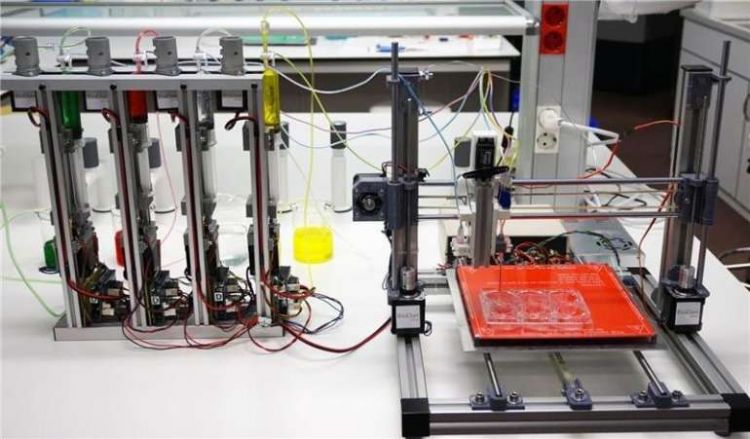The most impressive achievements in 3D bioprinting

Leading developments in the sphere of 3D bioprinting prove that healthcare and transplantology will be radically changed in the nearest future.
3D-printed tissues are identical to human skin
At the end of 2016 a group of scientists from Charles III University of Madrid used bioprinting to create skin with characteristics of real human skin.
The skin is bioprinted layer by layer. As a result the skin structure includes epidermis and dermis. It is biologically active and produces its own collagen which makes skin elastic and strong.
If a particular donor’s biomaterial is taken for printing, skin which may be used for transplanting will be created. Besides, a new development will be useful for testing cosmetics and household chemical goods.
3D-printed organs evolve a net of blood vessels
Scientists from the medical center at Wake Forest University (the USA) have developed an ITOP bioprinter that can fabricate vascularized organs, i.e. organs having an extensive net of blood vessels. Printed organs are taken well by the human organism. Stem cells are used as a material for printing.

To demonstrate how it works, scientists created a human ear and implanted it into the mouse’s skin. In 2 months the ear developed cartilaginous tissues and a net of blood vessels started functioning. Other successful experiments of these scientists include printed muscle tissues, jawbones and bones of skull.
Printed brain tissue
Scientists at the University of Melbourne in Australia have printed brain tissues from human stem cells. Their development will help to investigate functions and behavior of brain, study development mechanisms of such diseases as schizophrenia and epilepsy as well as test remedies in a more effective way.

The printing is performed layer by layer in sterile conditions. After printing is completed, a porous gel which provides structural and biochemical support to cells is created. Thanks to it printed structures are resistant.
They managed to print 6 layers of brain tissues with cells interacting with each other.







